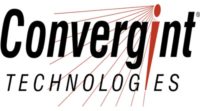Convergint, founded 16 years ago and ranked No. 2 on SDM’s Top Systems Integrators Report, has made 11 acquisitions in the past 18 months with no plans to slow down its global expansion. SDM Associate Editor Tim Scally spoke with Dan Moceri, Convergint’s co-founder and executive chairman, about the company’s growth strategy and what has driven Convergint’s continued acquisitions.
SDM — Convergint has made 11 acquisitions in the past 18 months. Was there an overall growth goal that that started you down this path?
Moceri — What started us out was really when we expanded internationally four years ago, and part of the reason for doing that was the same reason we’re expanding in North America: because the customers were pushing us that way.
So when you look at a lot of the acquisitions that we’ve been making, a lot of them are to be able to provide local service, because we can go anywhere in the world to do a project or to install something, but you can’t service it on a local basis. So a significant piece of our business is our global accounts. In order to do those, we have to be able to service them, and we have to build out this platform to do it.
We’ve been growing organically 10 to 15 percent if you go back about four years ago, and today we continue to grow around 10 percent organically, but it still wasn’t enough to meet the demands of the customers. So one way that we looked to be able to hasten that growth was through acquisitions.
We look at our whole service strategy that we’ve really employed from day one; you need the local feet on the street to be able to service those customers, and that’s driving a lot of the acquisition strategy to supplement the organic growth.
SDM — What do you look for in a potential acquisition, and what services or offerings has Convergint added with these acquisitions?
Moceri — There are three things that we really look for with regard to acquisitions; first of all, when we start an acquisition, we look at a company that is culturally similar to ours. We grew from a geographic perspective so we can do local service because our whole model has been based on service.
The second thing that we always look for is leadership. Today and for the last few years we hire one or two people somewhere in the world every day. We grow as much internal leadership as we can, but with that type of growth it still becomes a challenge to get the leadership that we need, so we always look for leadership with these acquisitions as well. We actually won’t acquire a company unless the leadership plans to stick around.
And then the third one, to your question of what additional services or technologies can we bring to the table with these acquisitions: We’ve had a number of different things. One of the acquisitions in Canada brought us a call center — not just a monitoring center but an engineering-based center. When we look at an acquisition we made in New York, it was the ability to service the municipalities with some of the technologies there.
A lot of them are service focused, so we learn a lot from them in terms of increasing the ability to service the customers, so we always look at what can they bring to us in addition to just the geographic coverage.
Our acquisition in Asia, going on four years ago, they’re absolute experts at servicing global accounts, and that’s a big piece of what our business is all about.
So those are the three things we look for: the geographic coverage to be able to better service the customers, leadership, and additional solutions and services we can bring to our customers as a result of the acquisitions.
SDM — What have been some challenges in incorporating these companies into Convergint and how have you overcome them?
Moceri — What minimizes that is a couple different things, and I go back to what I started with, which is the culture. When we start with a company that is culturally similar to ours, that means a service focus. Our whole strategy has never been to be the low cost installer of cameras and card readers; it’s providing more value to the service model, and there are many really good companies out there that share that same business model.
So if we start with that, it makes it a lot easier. First of all, we start with a due diligence team so we understand what we are acquiring. And then the most common thing that kills acquisitions outside of lack of culture is poor integration. And the other thing is when you treat everyone like a cookie cutter. What we’ve done from day one is we look at every acquisition uniquely, so how we integrate them into the company is different from acquisition to acquisitions. We’ve got some basic things that we’ve got to report and get done, but we really work with the leadership team and determine what makes sense in each case — what do we leave alone, because they are usually good, profitable companies that we’re buying, and you don’t want to mess that up by changing everything on day one.
And so we work with the leadership team of the acquisition, and we figure out what is the best thing that we can do so we can make one and one equal three. And every acquisition that we’ve done one year out, we have more people in that acquisition and there’s more revenue — it’s grown, because we really focus on how do we build a business as opposed to taking out cost. We have never done an acquisition based on cost synergies.
SDM — What is the near-future forecast for growth and acquisitions?
Moceri — We will continue to grow and make acquisitions at the same rate because we think we’ve enjoyed some pretty good success with it, it wins us additional businesses, and it helps us to grow, which, at the end of the day, helps us to better service those customers on a global basis.
We now have 80-plus locations throughout the globe, and we get really good coverage in North America, the whole Asia Pacific region, and we have plenty of opportunities to continue to build our European footprint. There’s the Middle East, there’s South America — so we’re looking at a lot of these different areas as well as just here in North America; you’re seeing a lot of acquisitions still in North America, and you’ll probably see a couple more this year, and the pipeline is just as strong going into 2018.
SDM — How have growth models changed for companies such as yours in last 15 to 20 years?
Moceri — We started Convergint 16 years ago with nothing, so we built from scratch; this year we’ll be upwards of $750 million.
We are actually seeing accelerated growth in our business even at the larger numbers, and I think a lot of it has to do with the service model, which we started from day one, and what we’re also finding out is there are numerous global accounts that are looking for a service-based provider on a global basis, and there aren’t very many that can deliver consistently across the globe. So I think that’s fueling our growth.
We’re very strategic when it comes to vertical markets, so we see huge opportunities in the banking business and we’re seeing that grow. There are huge opportunities in utilities. Part of the reason we bought SigNet is because of our focus on the government business; our government business is $100 million and it’s growing. So we look at everything that we do very strategically, and where does it make sense to get profitable growth — where does it make sense to focus on those customers that are service focused, not the ones who are just looking to install a product and move on, but really complex enterprise-wide systems with many locations and complex applications. Those are the types of customers that we’ve been going after.
We have a lot of bread-and-butter local business, but a lot of the growth has come from global accounts and the focus on the vertical markets.
[Those global accounts] have always been there, but in a little different format. What we’re seeing today is we’re picking up a lot of global accounts that may have used two or three or four different integrators across the globe, and what they’re trying to do is consolidate that back to one so that they can get consistent service; we’re seeing more and more accounts that are looking for one service provider across the globe as opposed to having to deal with different integrators or providers in different regions.



